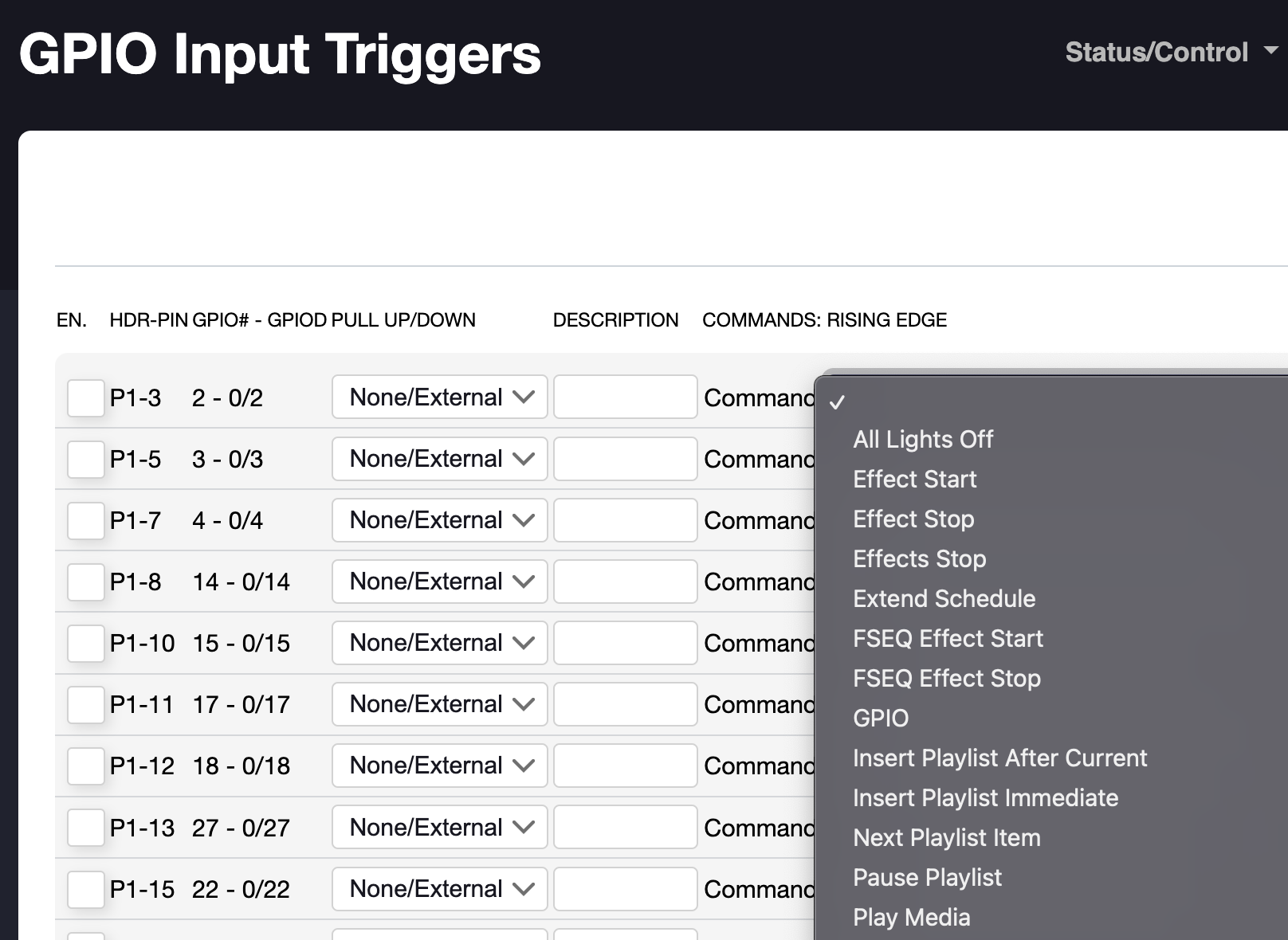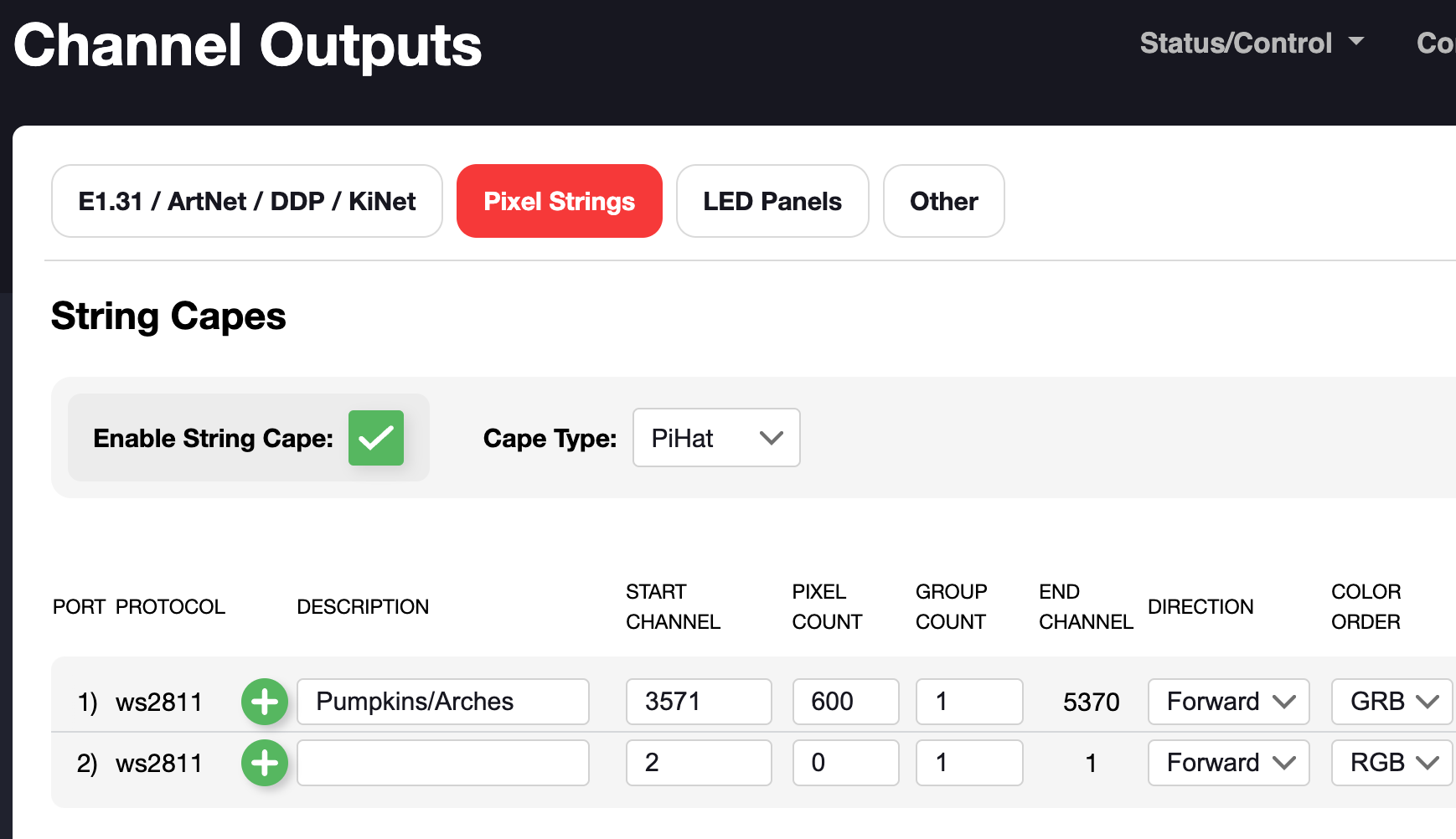There are two big pieces of software that I use in my show. XLights is an open source sequencing program that will generate light shows with patterns, colors, and timings. And it can do so associated with music as well. Falcon Player (or sometimes Falcon Pi Player - FPP) is the software that schedules and manages your show. You can run shows directly from XLights, but I find it's much easier to use FPP and have a dedicated system managing the show.
Both pieces of software are complex and go deep on features. For the singing pumpkins, I'll outline some specifics of how I build my shows:
XLights
My pumpkins are made up of 4 LEDs each, and there's not really (so far as I know) a good way to represent that, so I just made a 4-light-string for each pumpkin. After I had the pumpkins setup for the year, I took a picture and used an image editor to add numbers to each indicating where in the chain they were. This makes a difference when you're decided which pumpkin should be singing at a given moment, and injecting some variety into a show can really delight an audience.

For the pumpkins, I use the gradient effect almost exclusively. It's excellent for correlating to volume and when vocals or musical tones hit. The exception to this is using the "fire effect" which simulates the randomness of fire, and works great as something for the pumpkins to do between shows.
Sequencing music can be very time consuming. There are some built-in tools that will generate timing marks through audio analysis. You can use this to build sequences against.
Falcon Player
I'll start by saying that in both cases of my Musical Pumpkins as well as my Christmas display, I have not dug much into the feature setup of Falcon Player. For instance, I obviously drive LEDs with them, but you can also setup GPIO inputs to add interactivity to your haunt. A Pyroelectric or sonic sensor can be the perfect trigger to cue lightning and thunder. Or in my case startup the next song on a list.

Because I drive the pumpkins directly off the Raspberry Pi, I have to map the output pins (I only use pin 6, but they come as a pair) to the appropriate lighting channels. There are 3 channels per RGB LED, and 4 LEDs per pumpkin. In this case, I reuse this setup for Christmas time as well - so while my pumpkins need only 108 channels, the arches need more.

FPPs scheduler is really smart. Not only can you setup different shows for different days, you can also order them so if one schedule doesn't apply, the next thing on the list will execute. For my pumpkins, I play my show every 10 minutes. The playlist is only about 6 1/2 minutes long, so I have a second sequence which displays flashing colors (which my wife likes) and glowing firelight (which I like)

Obviously there's a lot to be said about these two software packages. I encourage you to spend time time in the forums for each. They're really incredible programs and you can accomplish a really impressive show with them.
 Aaron
Aaron
Discussions
Become a Hackaday.io Member
Create an account to leave a comment. Already have an account? Log In.